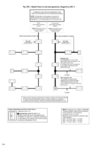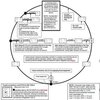Hi,
We have a garage not far from house that has been converted a few years ago in to a usable room.
We want to put in an electric panel heater (likely just that rather than an oil filled one) and wall mount it.
Found a 2kw one with built in timer and manufacturer supplies it with a moulded plug and says it's absolutely fine to plug in (or permanently fuse spur it).
There is a second consumer unit in the garage installed only a few years ago from the main house board (also new at the time) proper armoured cable etc. It's all been registered as an installation at the council, approved etc.
In the garage there are 3 sockets to one 20amp fuse on the board but I note they have done this as radial rather than a circuit returning to the board, normal 2.5mm T&E used. So it runs to the first socket, from there to second socket and then to third where it terminates. This heater will be on the first socket and nothing heavy will get used anywhere else, no power tools or other heaters etc.
My question please, any issue in plugging this 2kw unit in to a radial circuit rather than a more normal ring one?
Thanks.
John
We have a garage not far from house that has been converted a few years ago in to a usable room.
We want to put in an electric panel heater (likely just that rather than an oil filled one) and wall mount it.
Found a 2kw one with built in timer and manufacturer supplies it with a moulded plug and says it's absolutely fine to plug in (or permanently fuse spur it).
There is a second consumer unit in the garage installed only a few years ago from the main house board (also new at the time) proper armoured cable etc. It's all been registered as an installation at the council, approved etc.
In the garage there are 3 sockets to one 20amp fuse on the board but I note they have done this as radial rather than a circuit returning to the board, normal 2.5mm T&E used. So it runs to the first socket, from there to second socket and then to third where it terminates. This heater will be on the first socket and nothing heavy will get used anywhere else, no power tools or other heaters etc.
My question please, any issue in plugging this 2kw unit in to a radial circuit rather than a more normal ring one?
Thanks.
John



